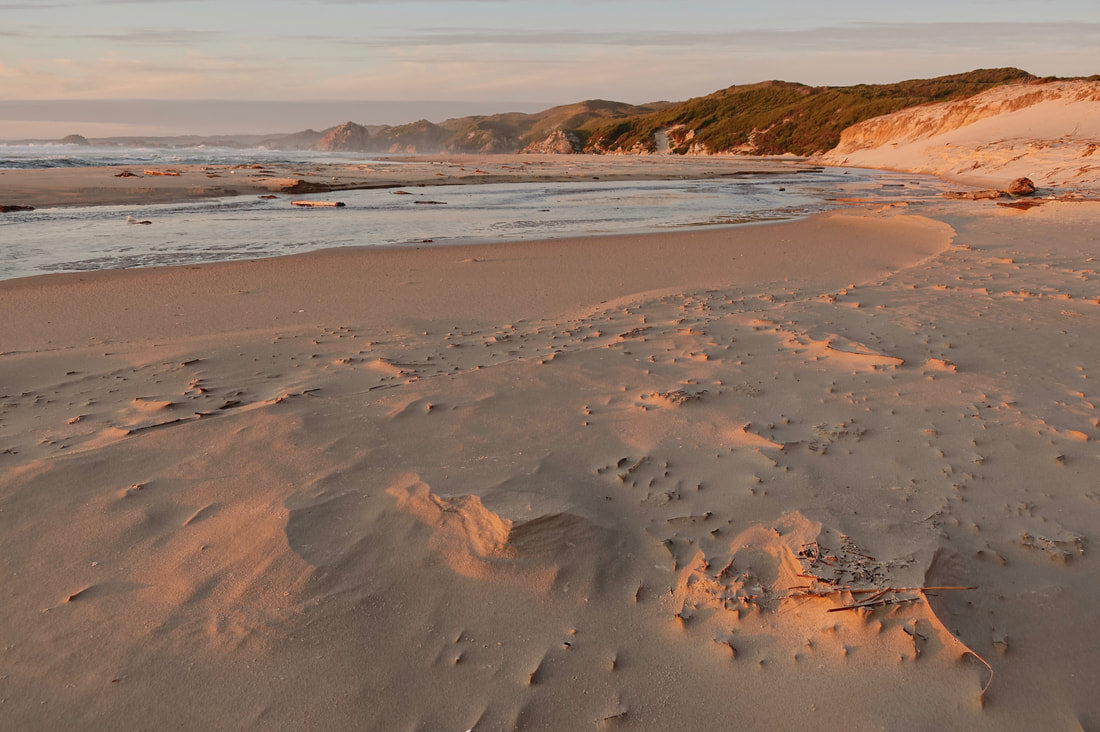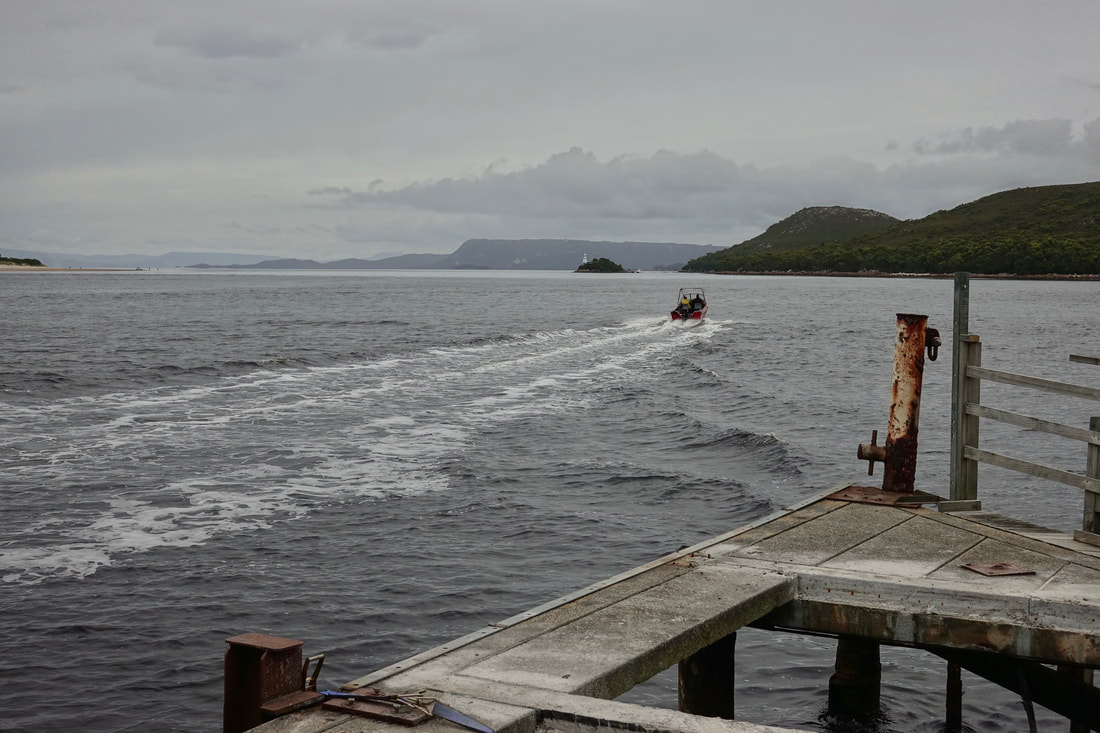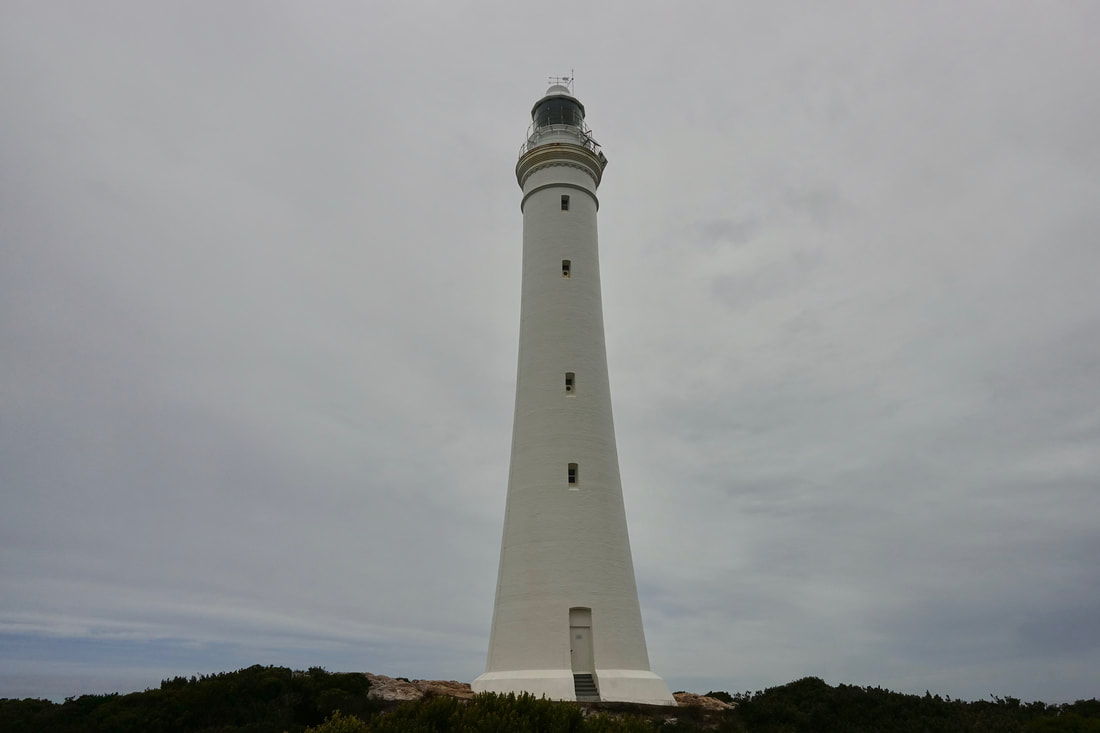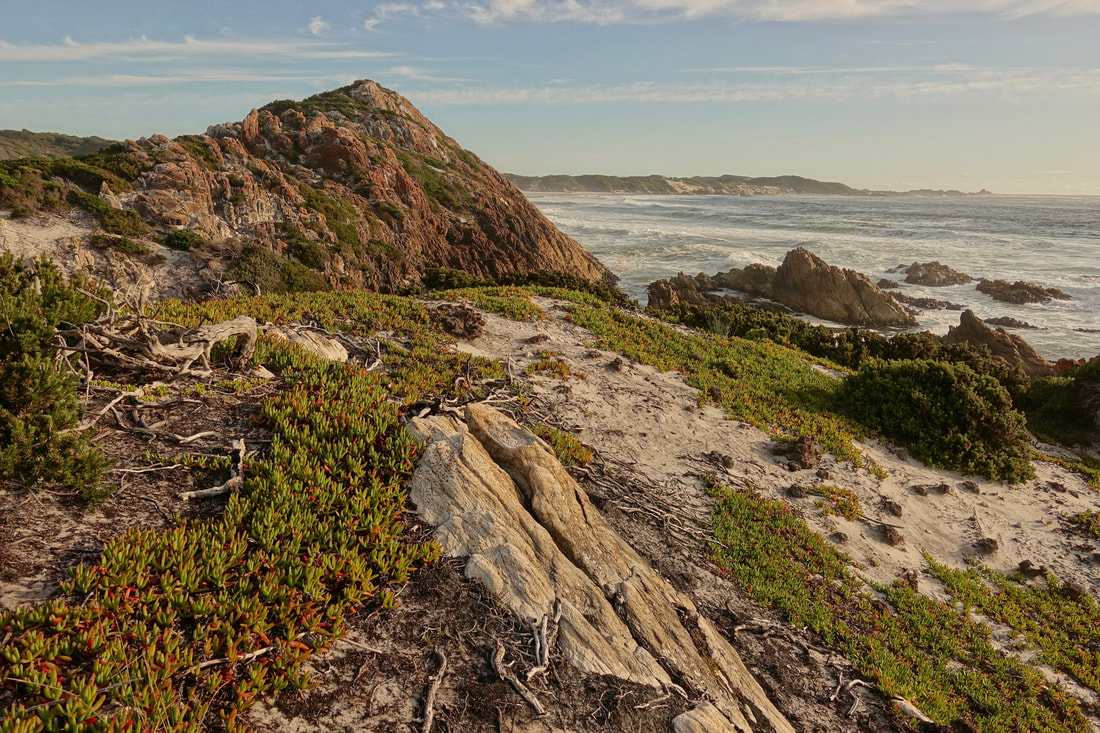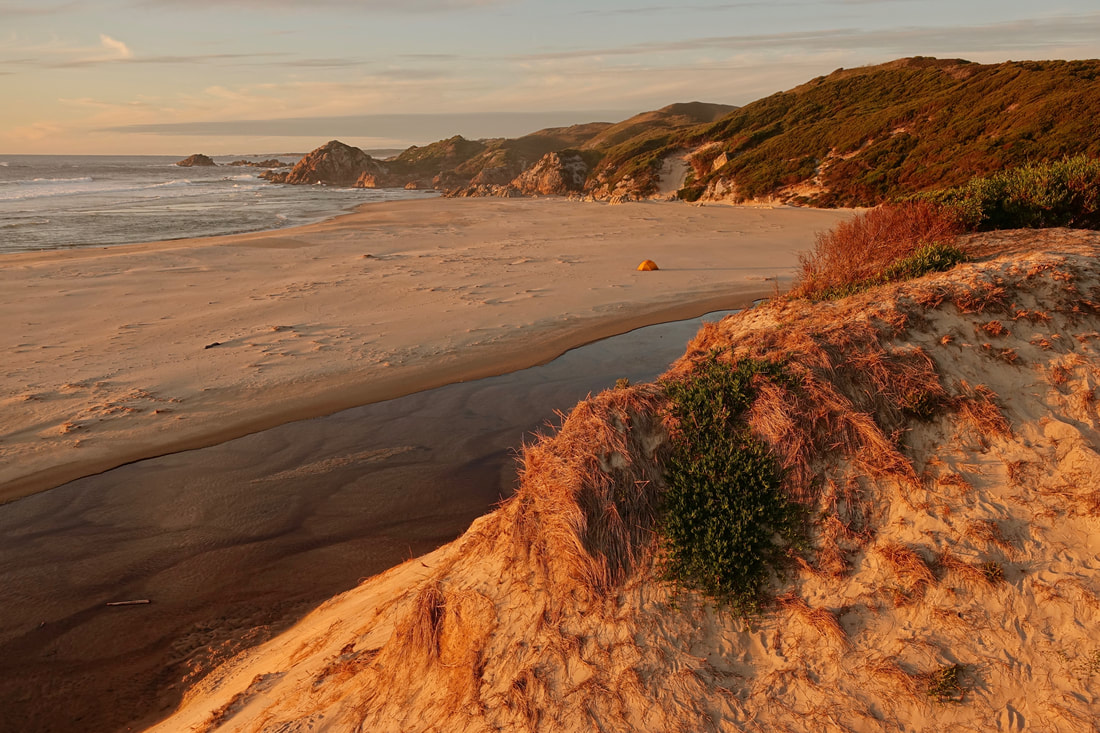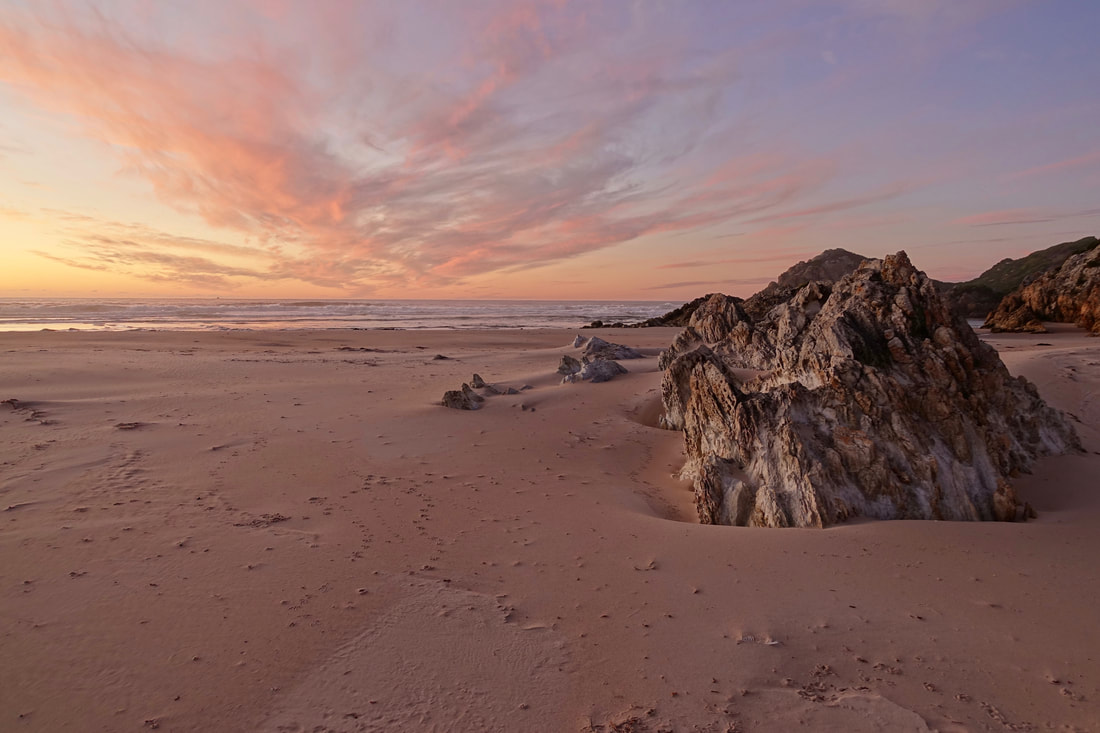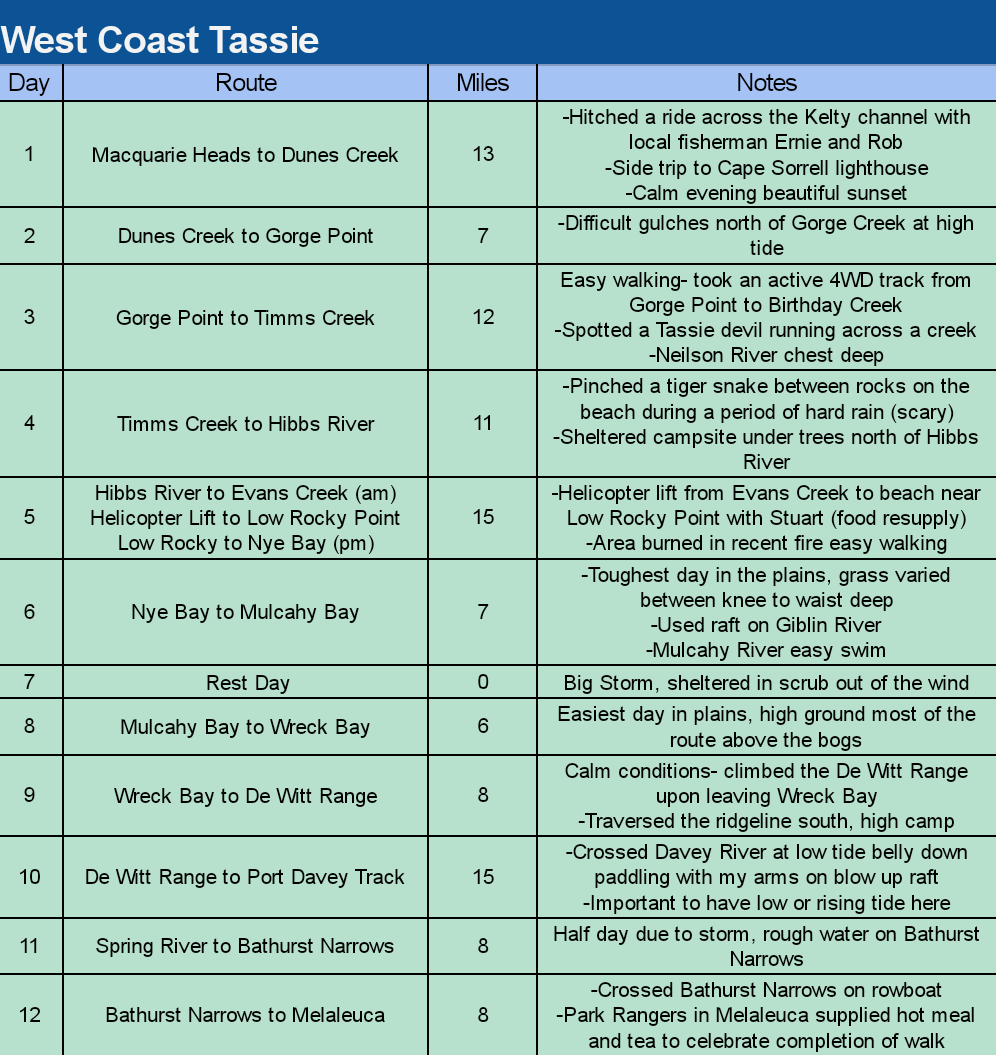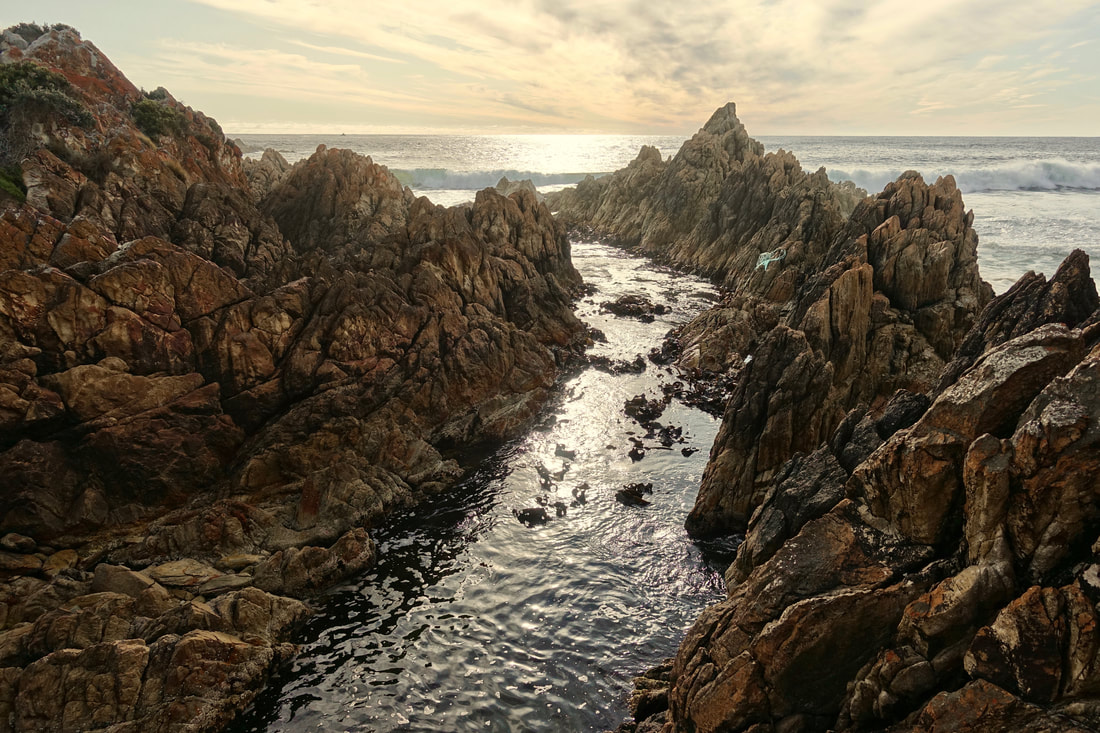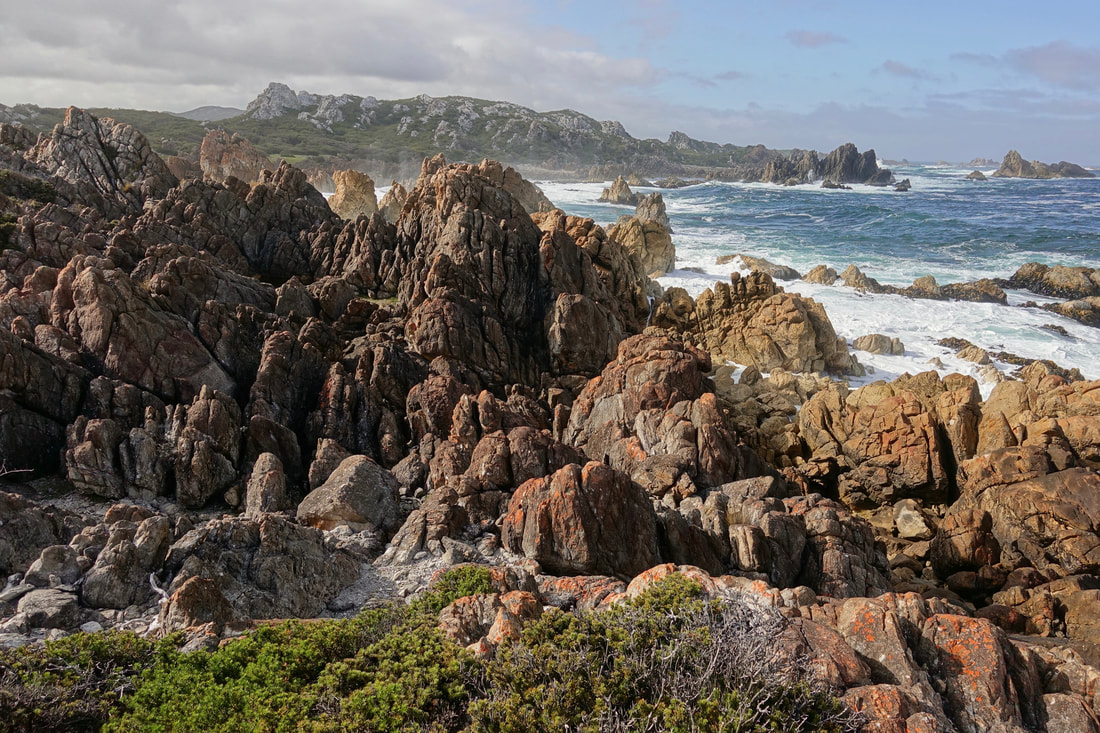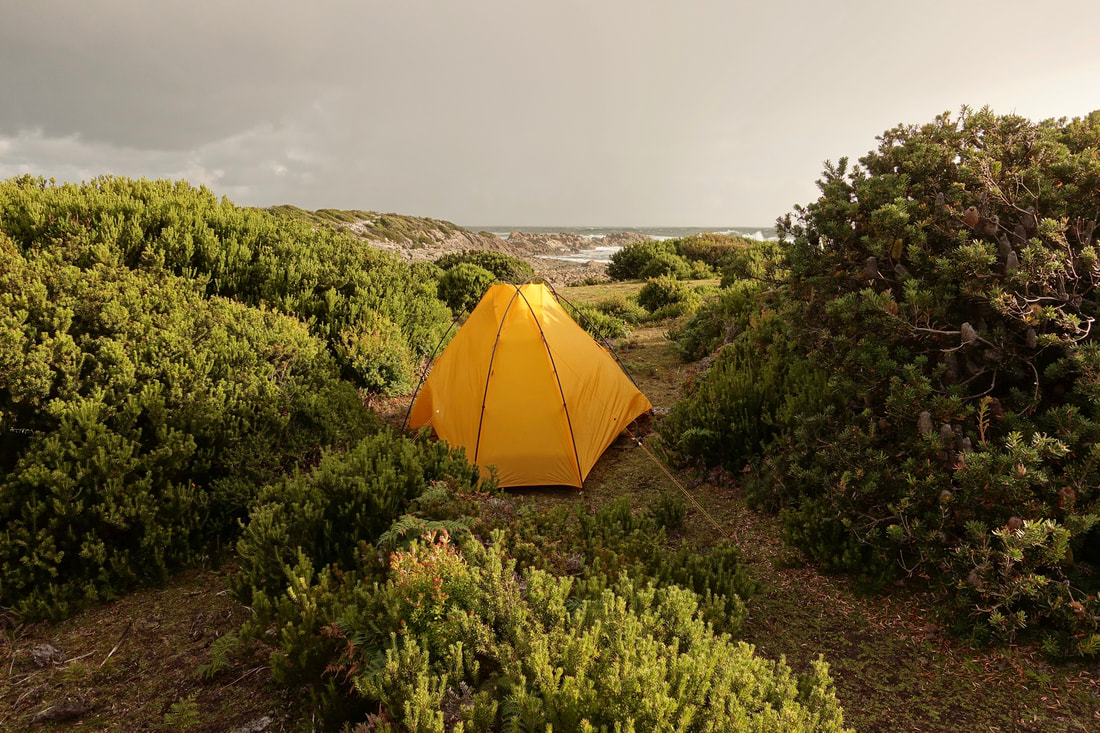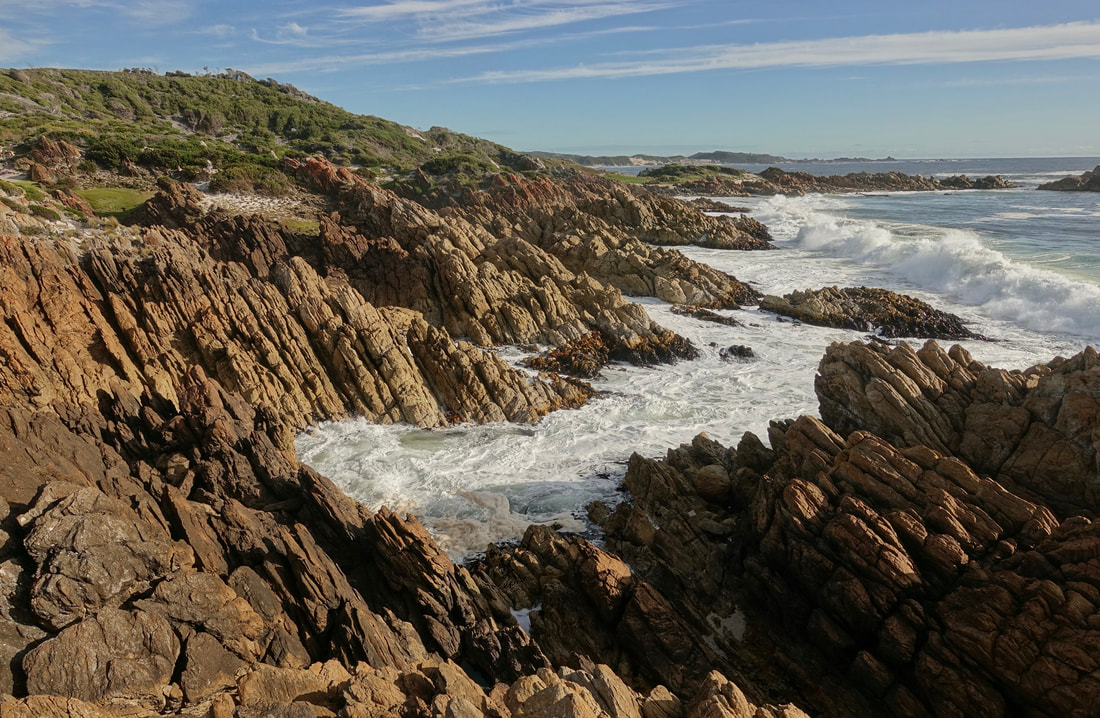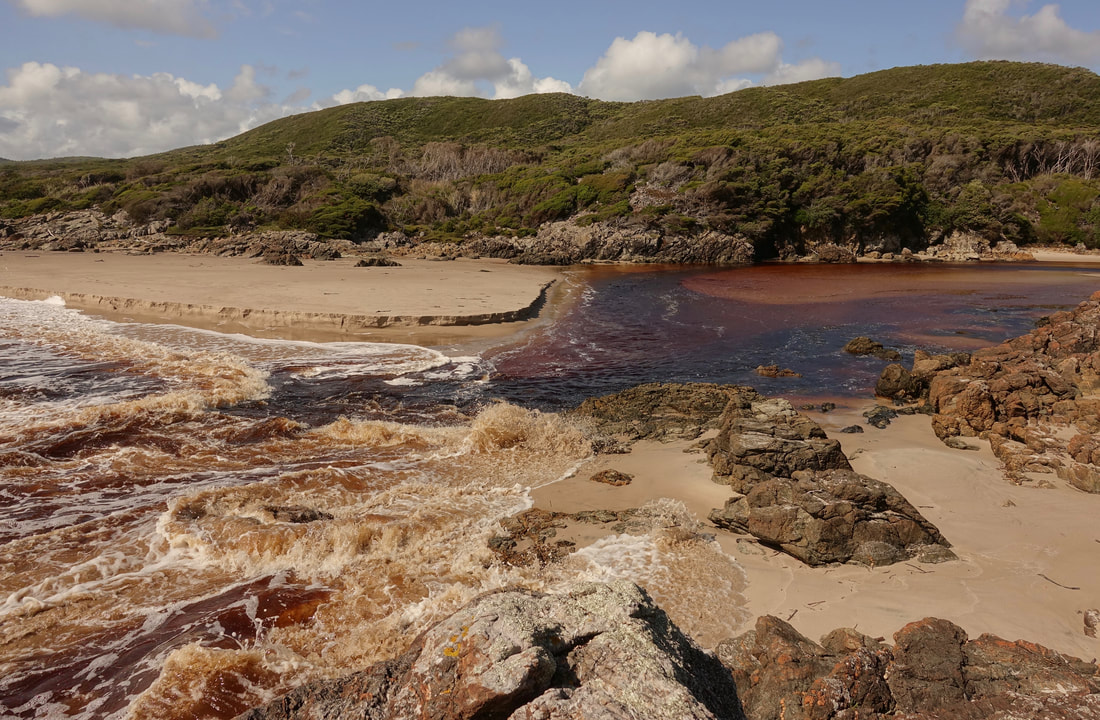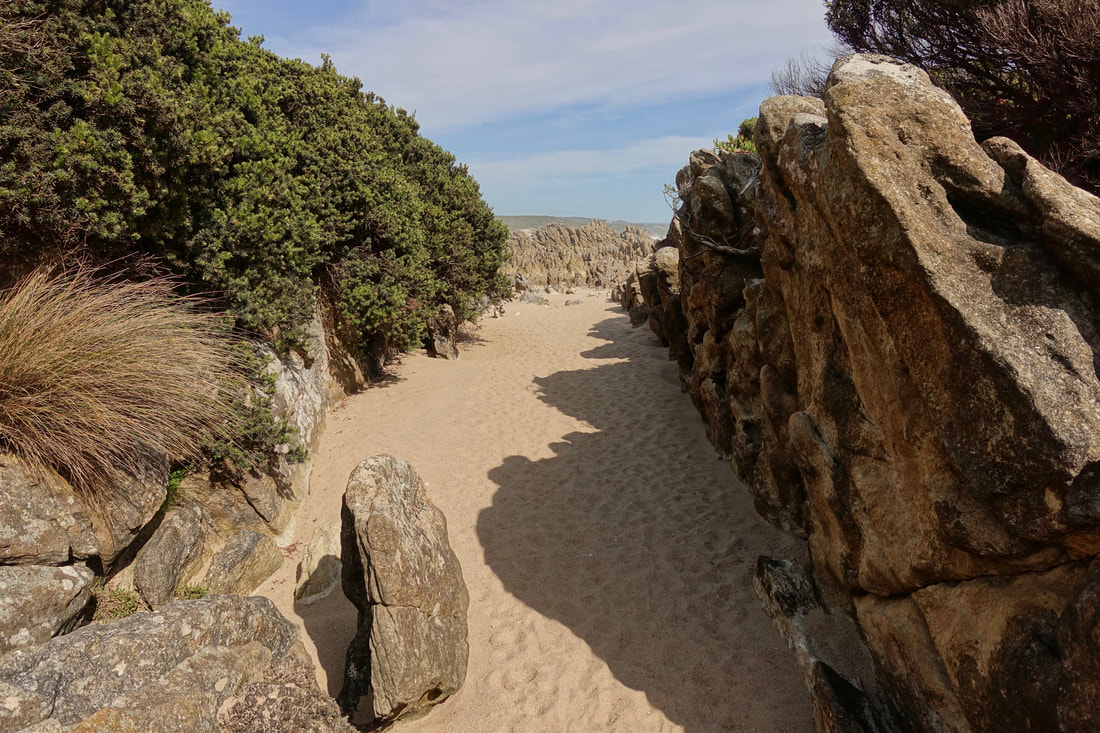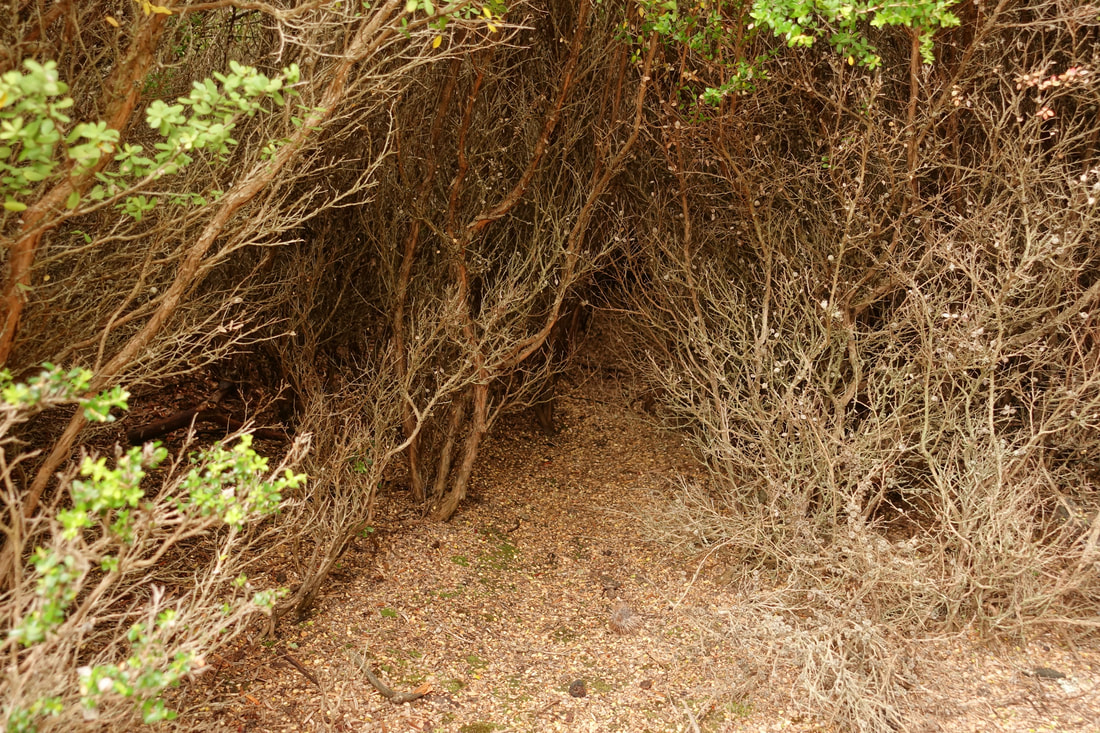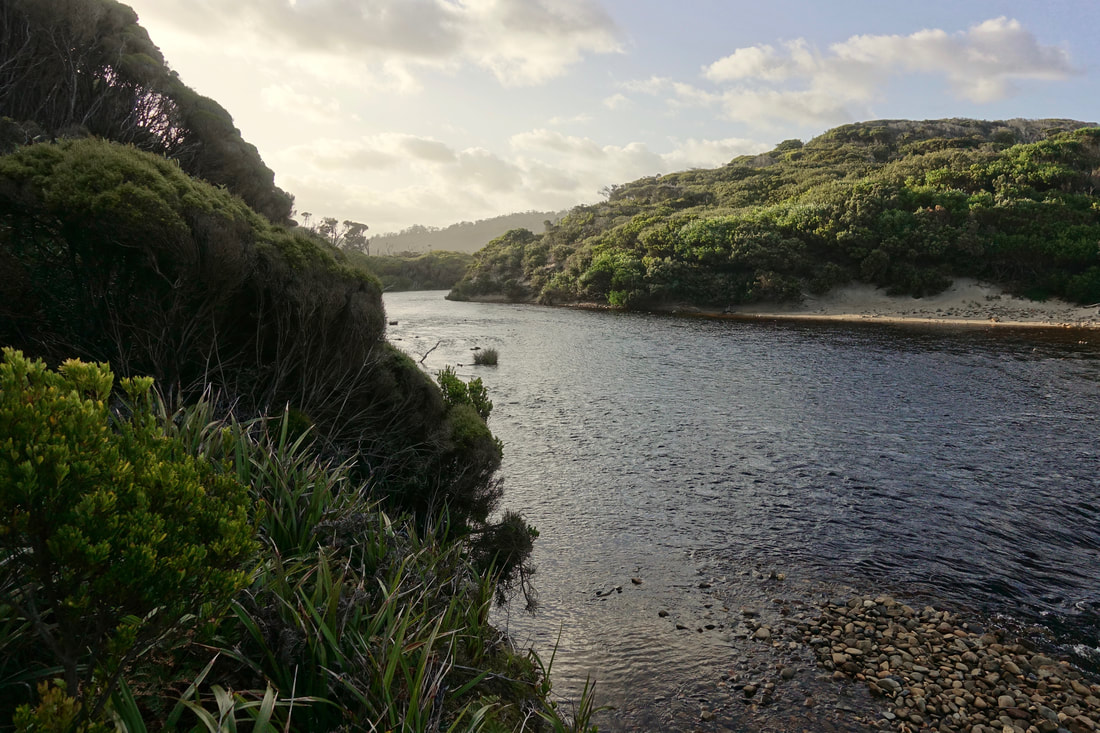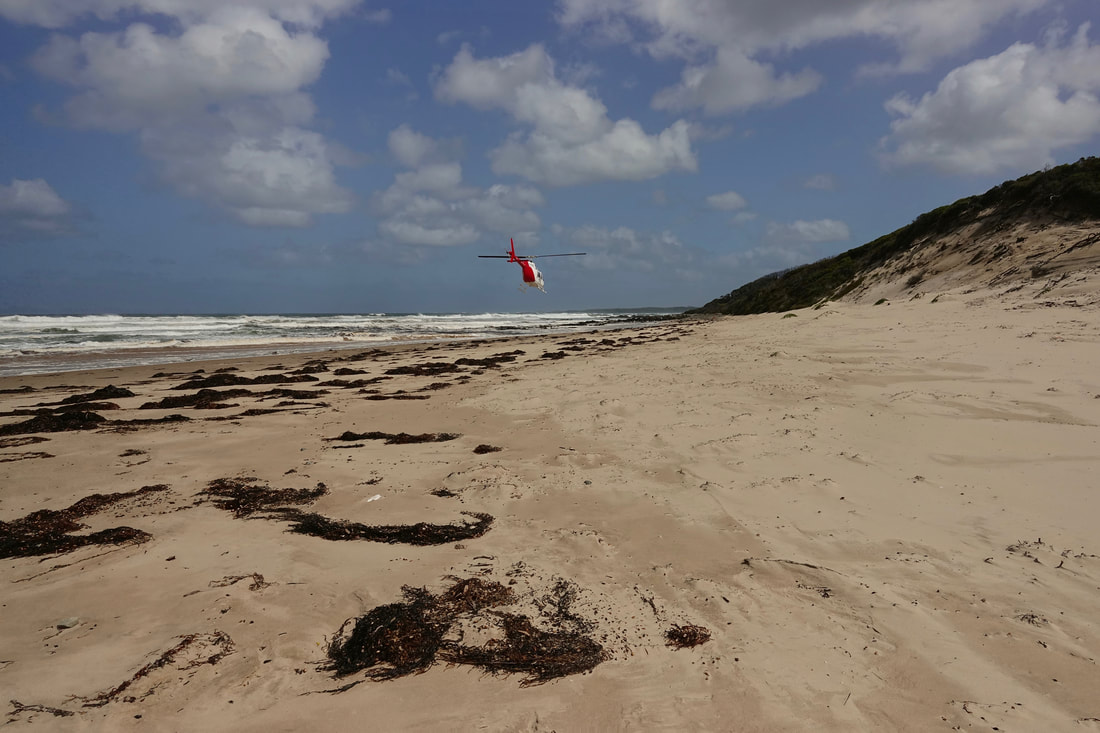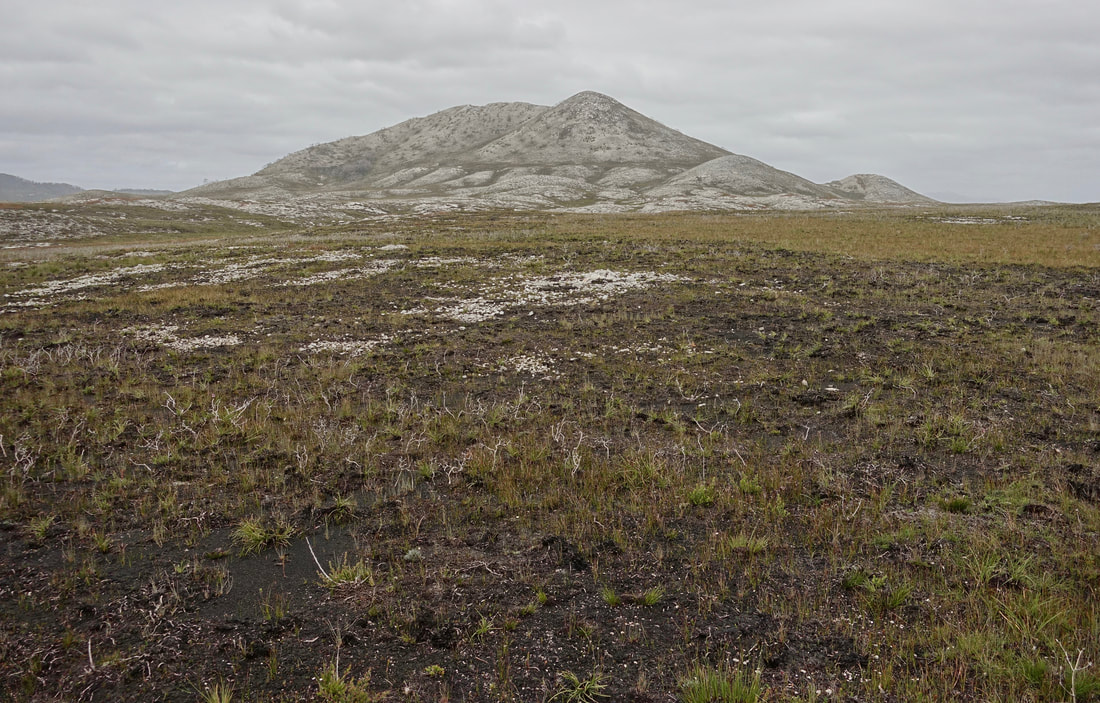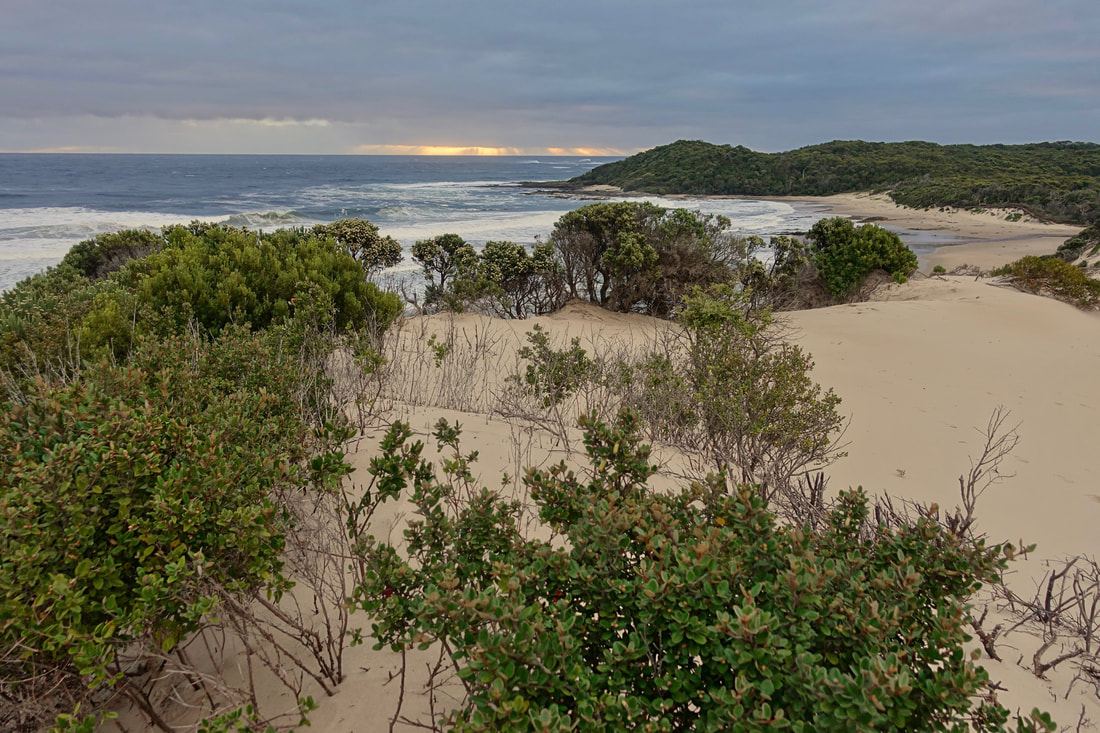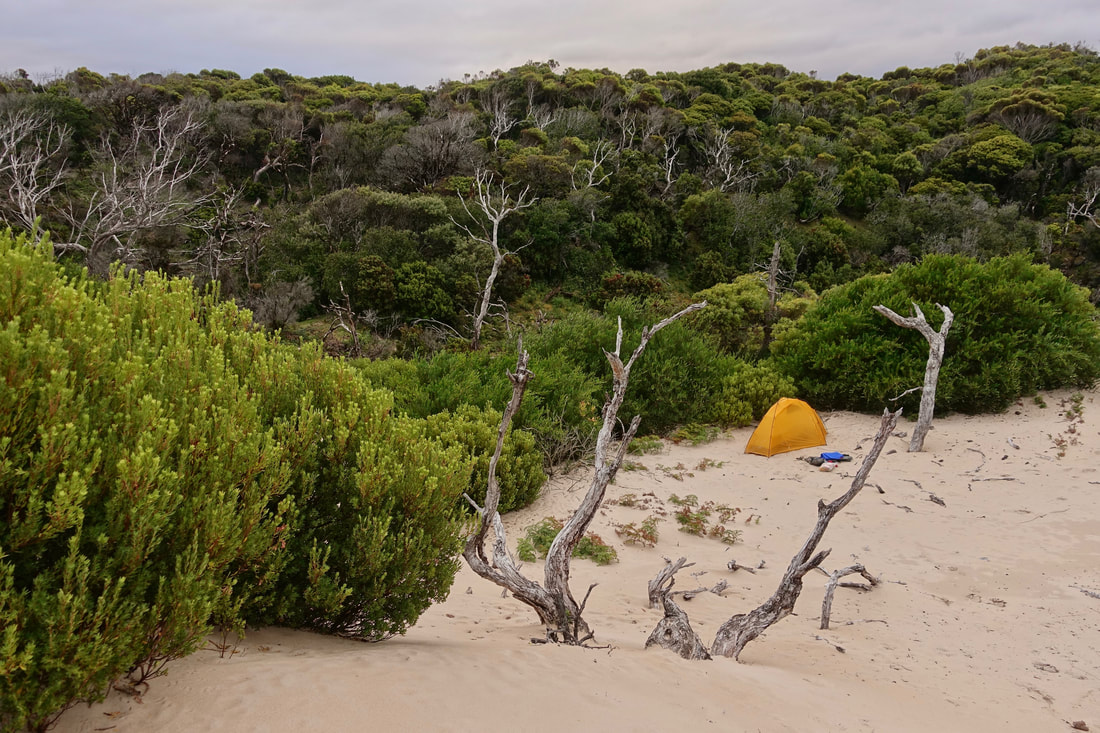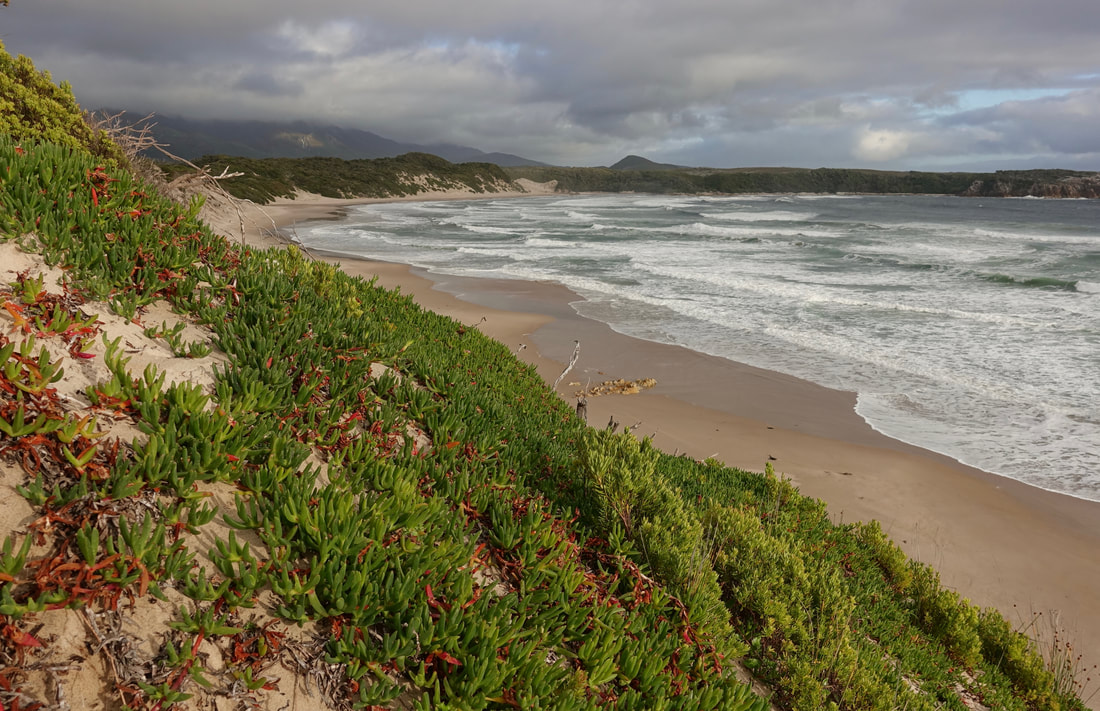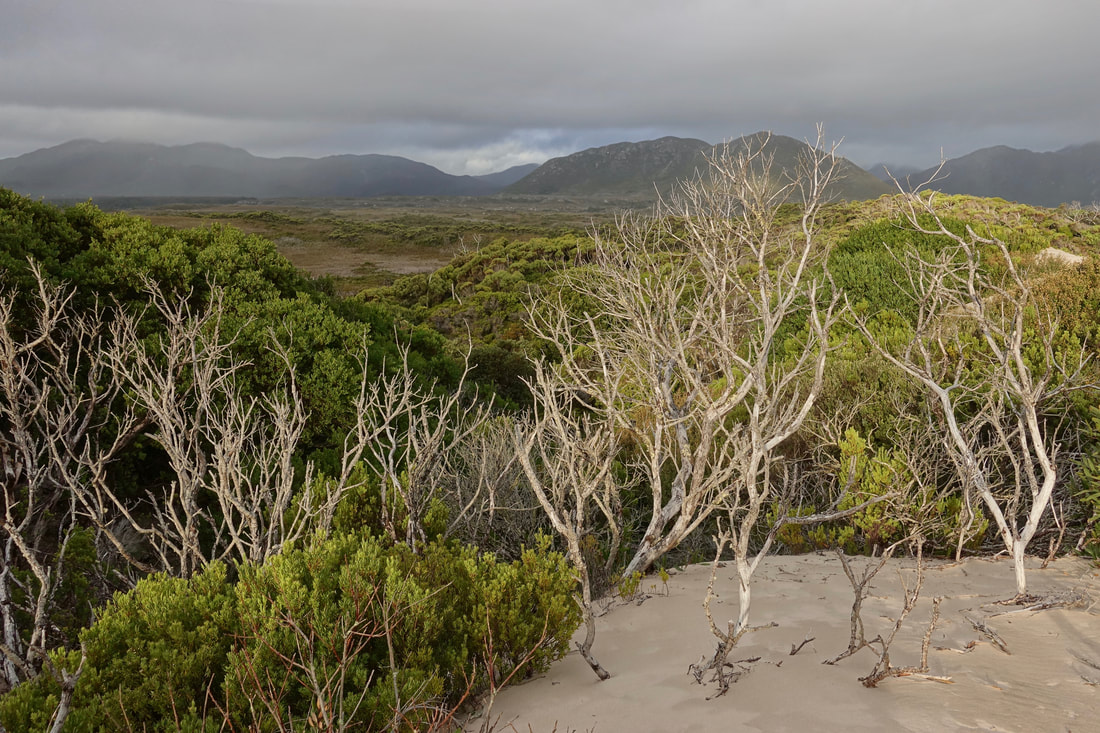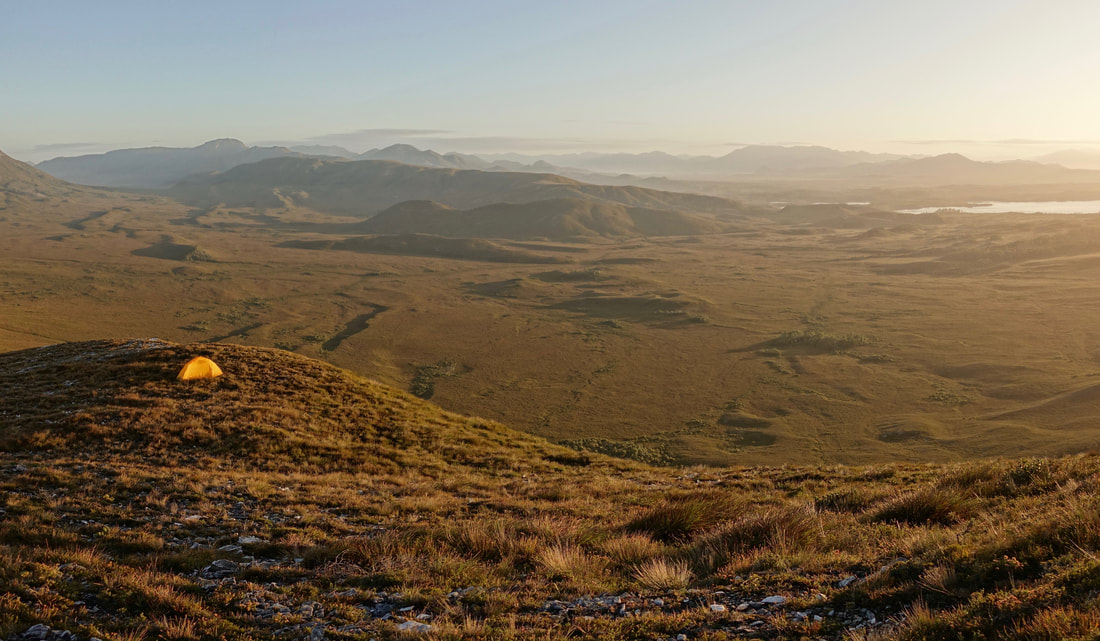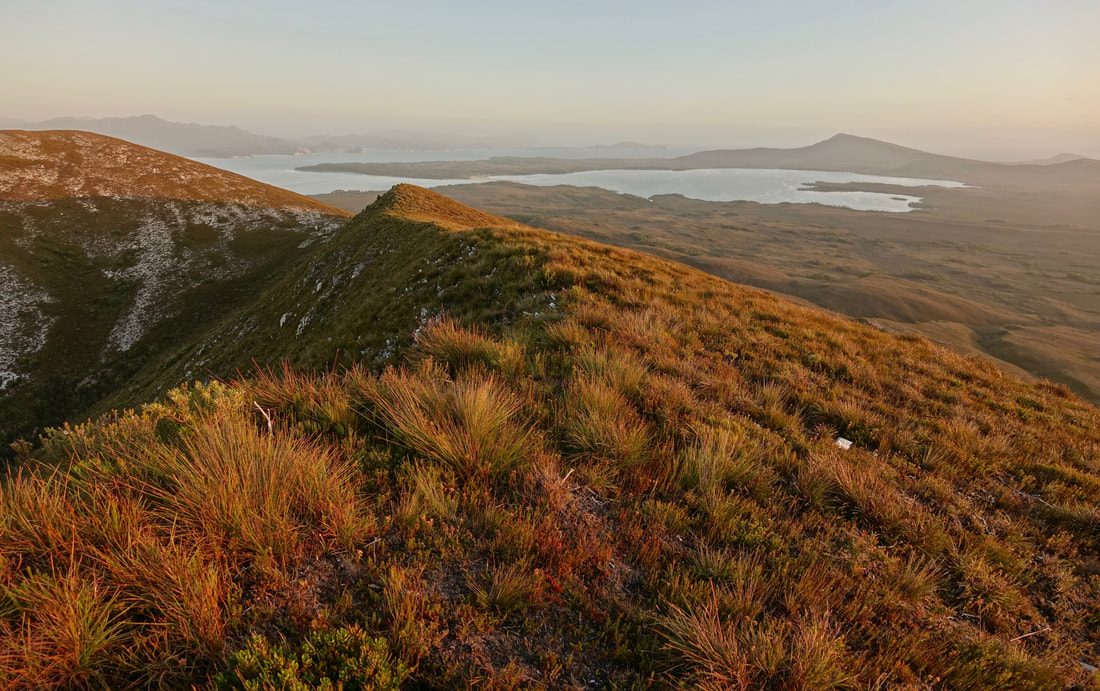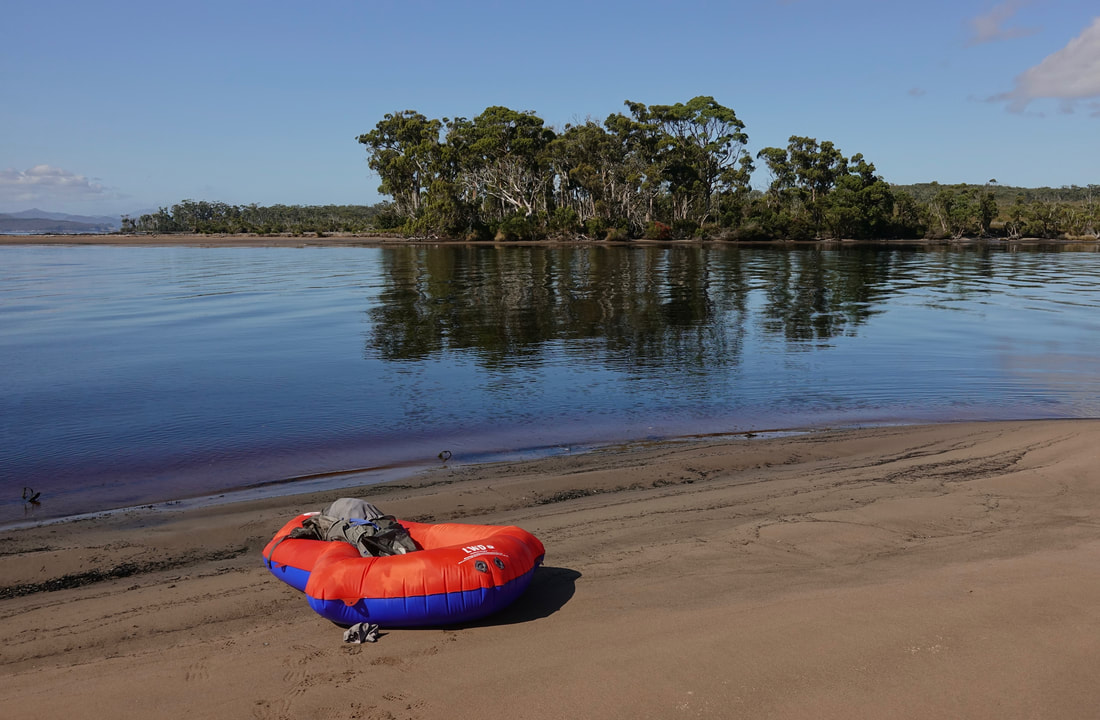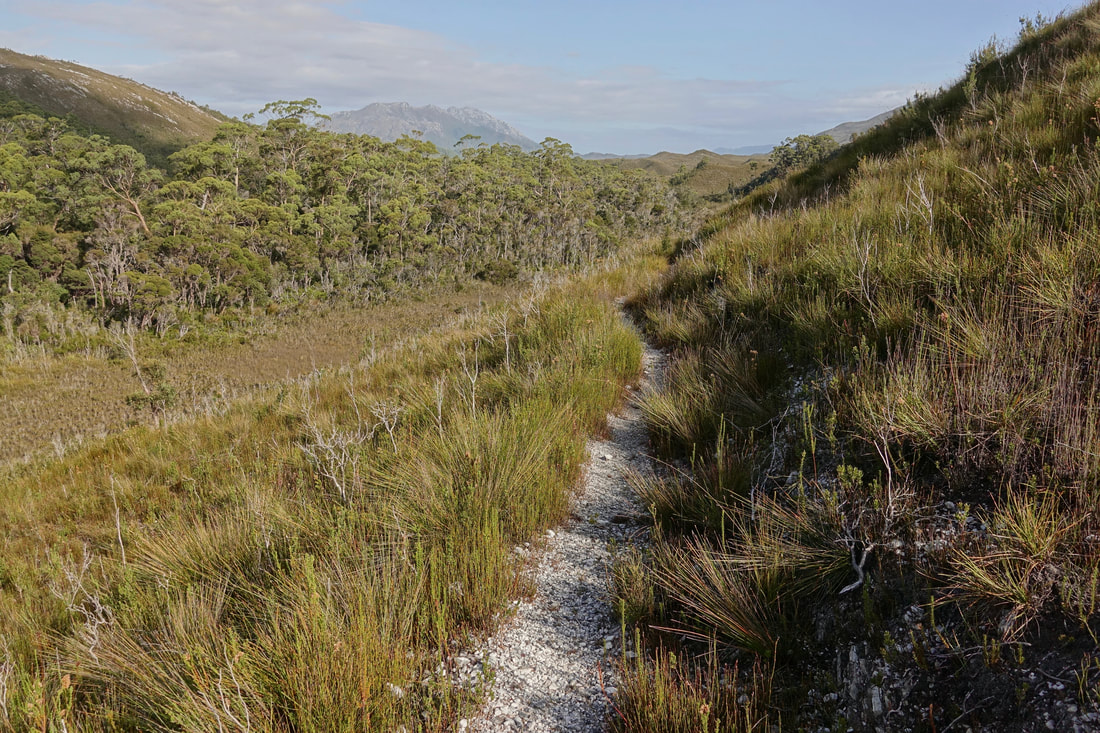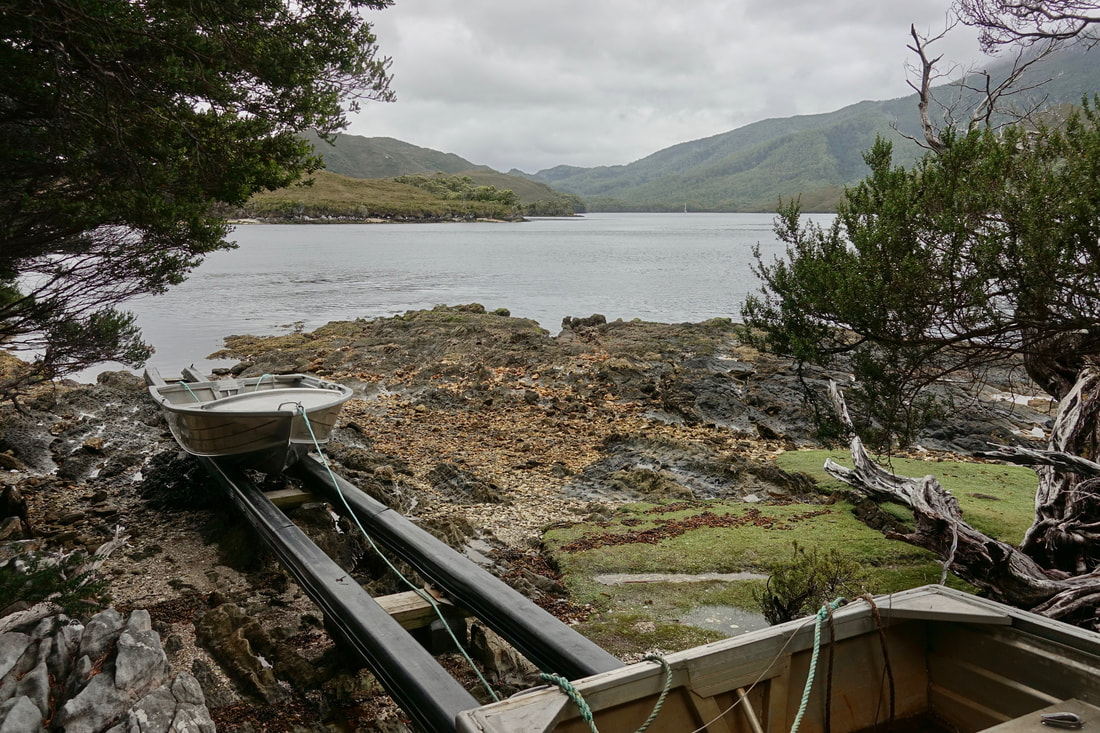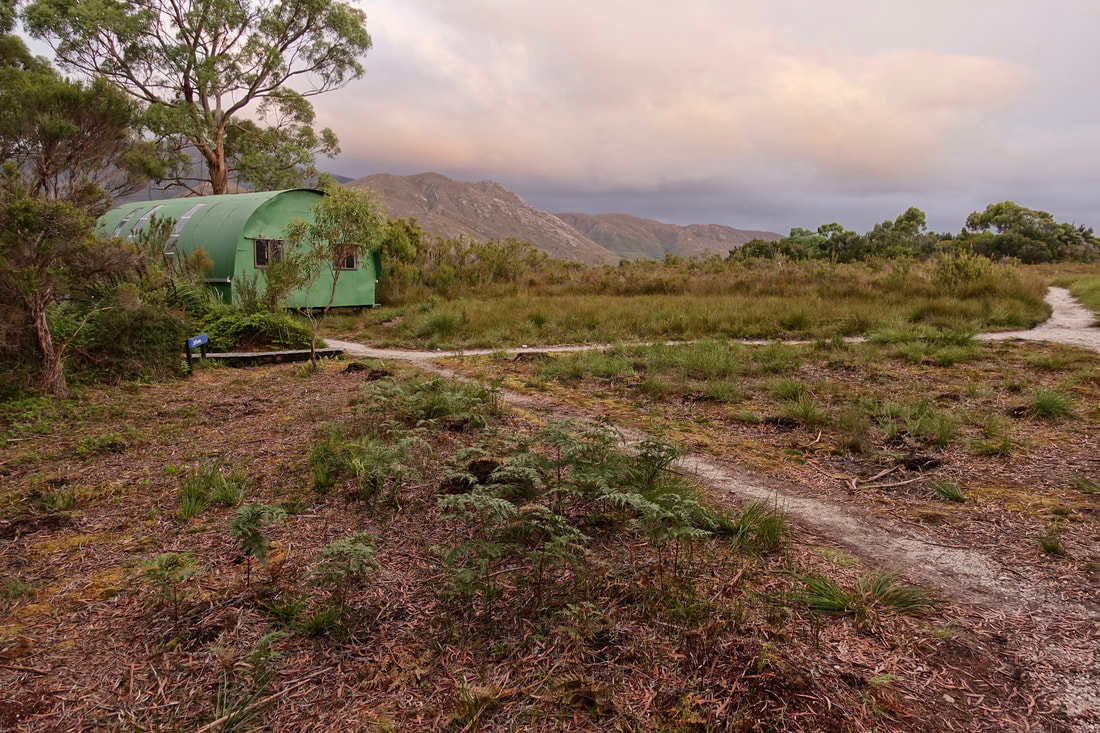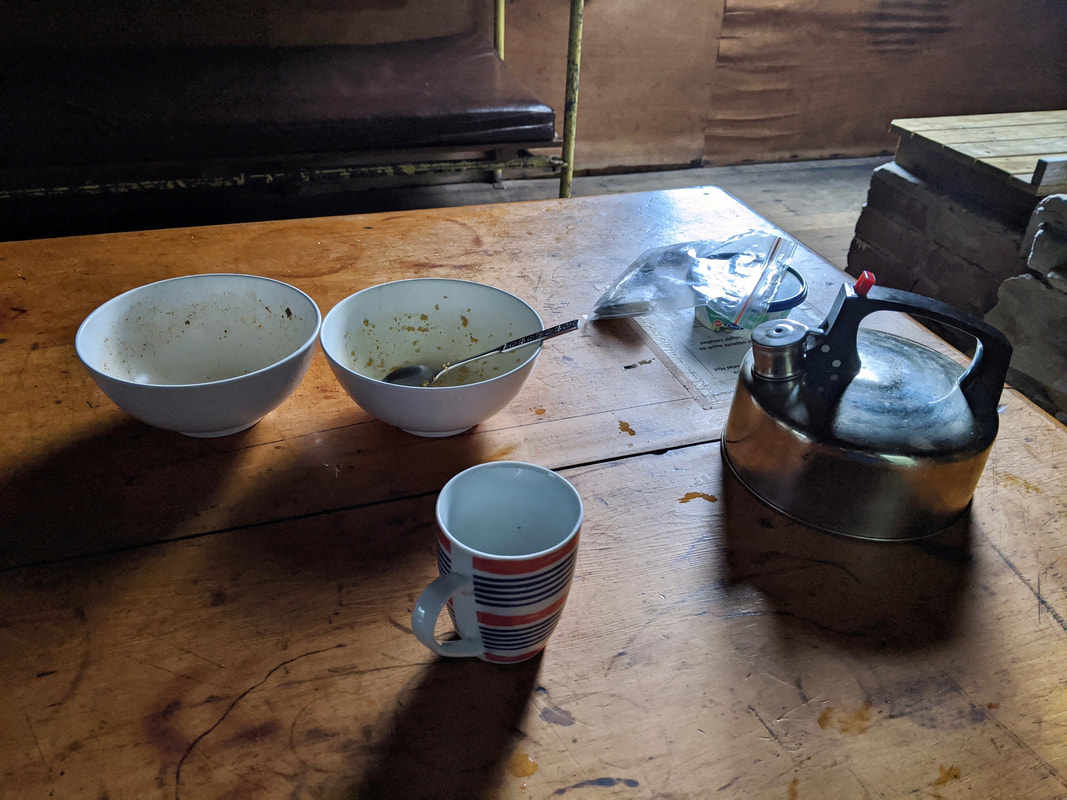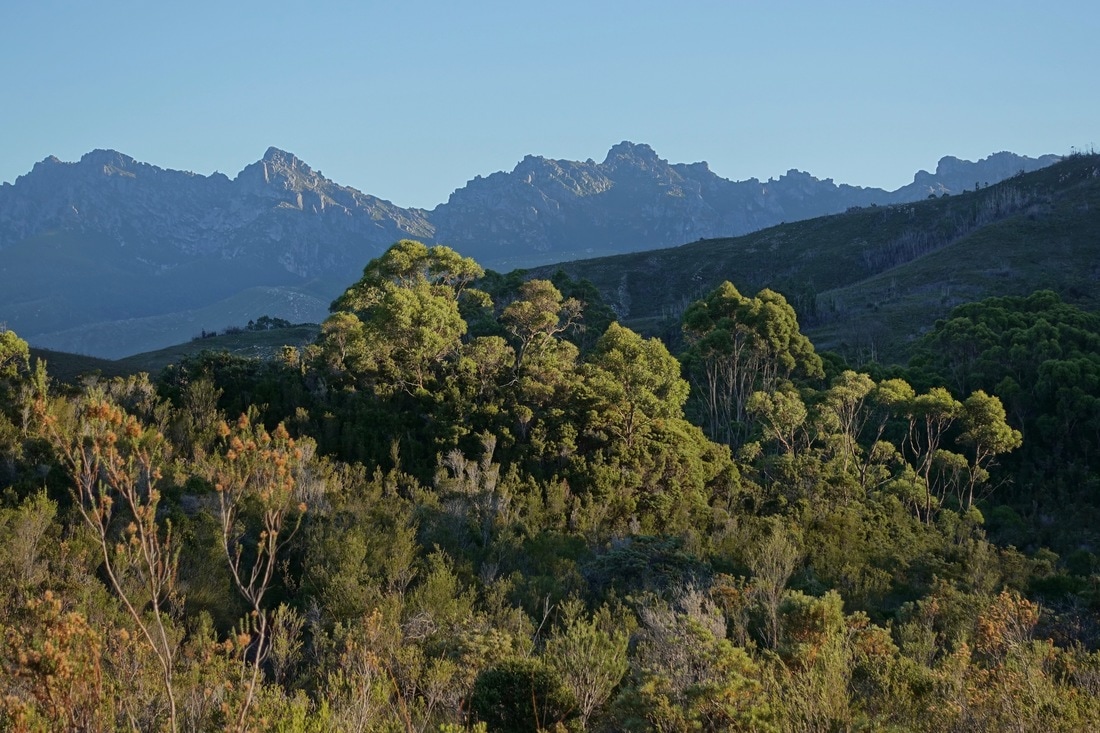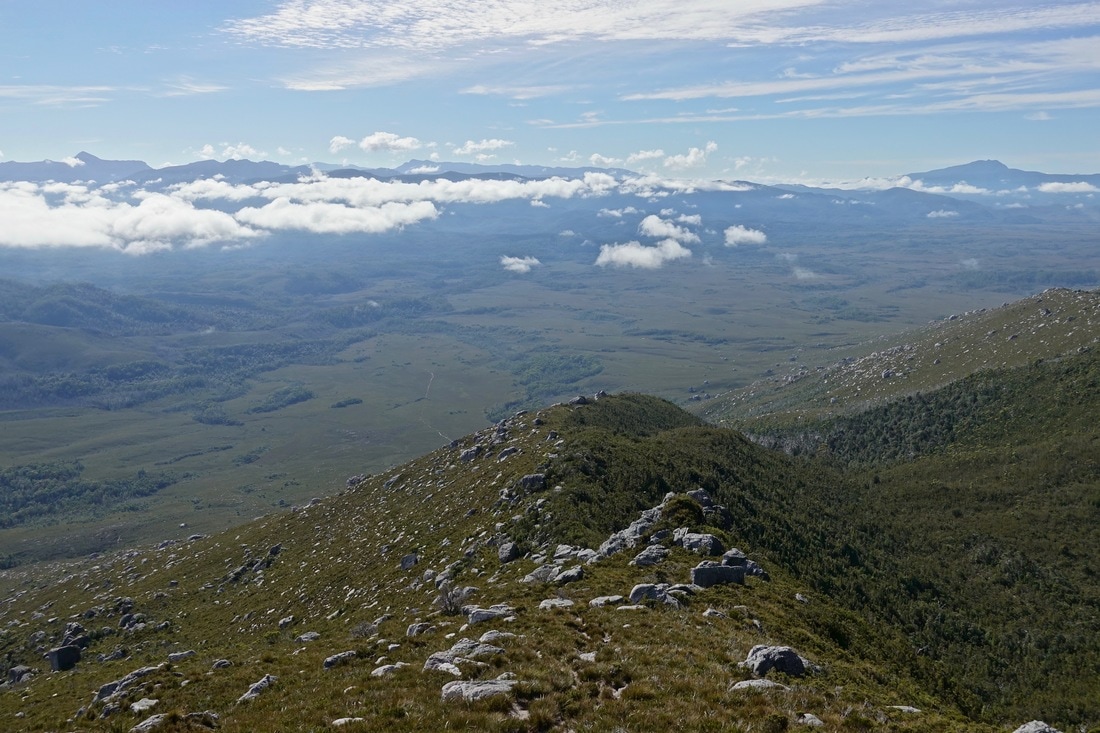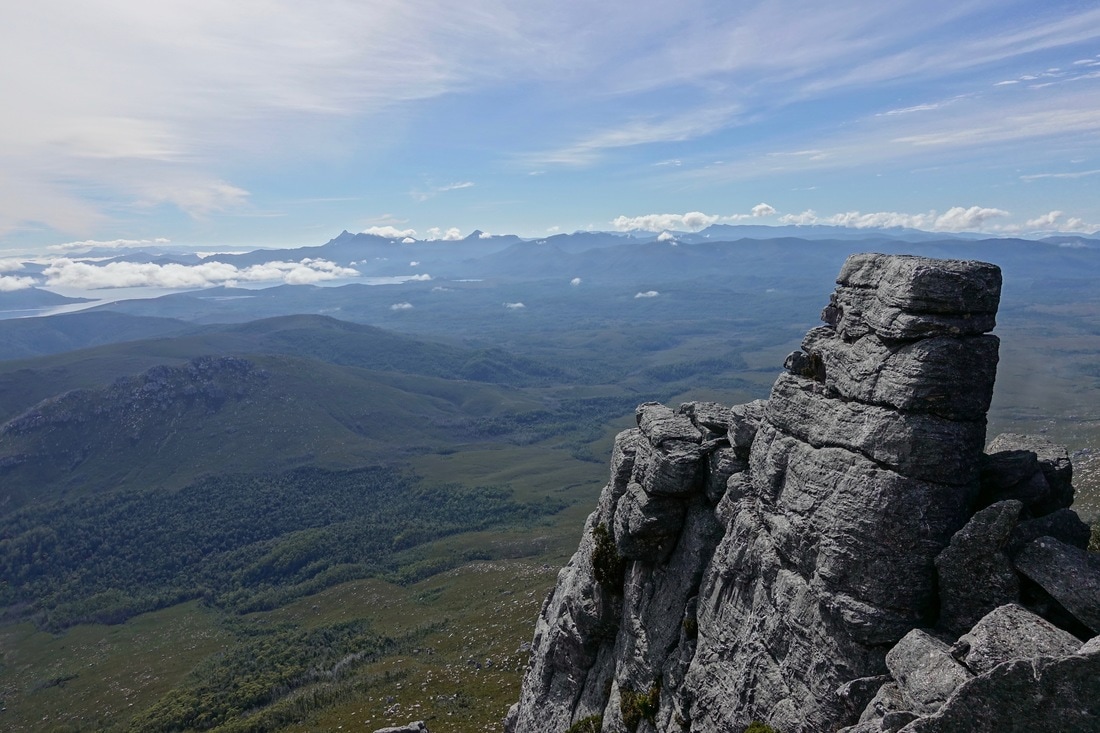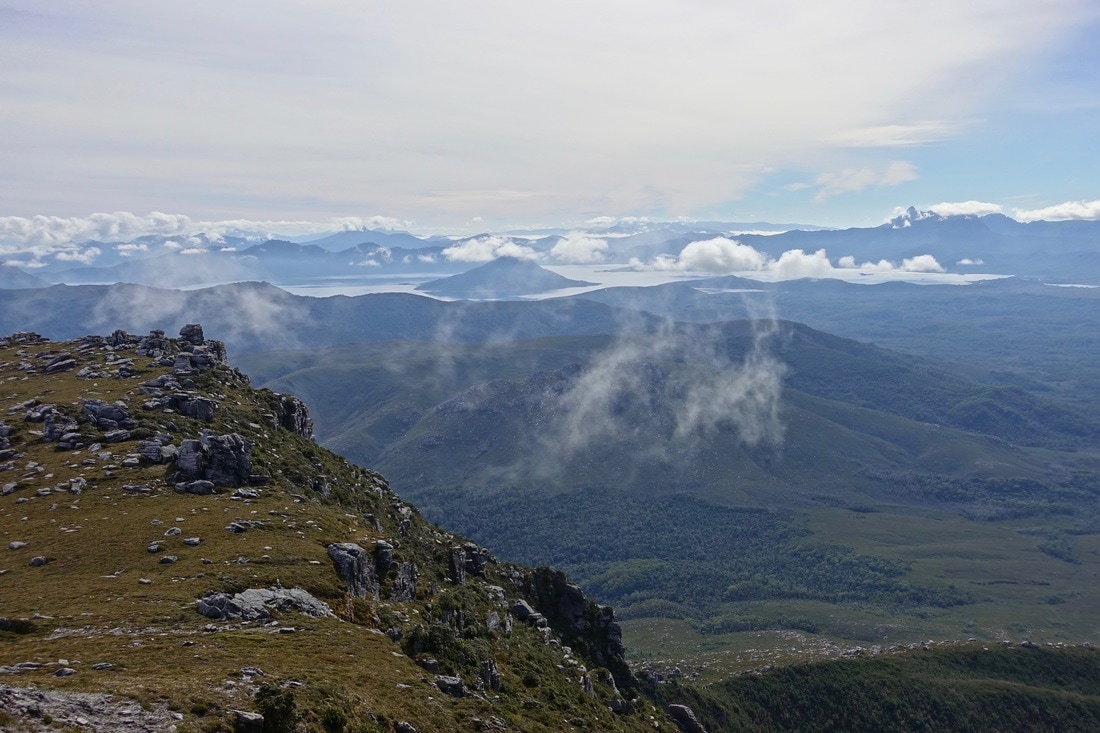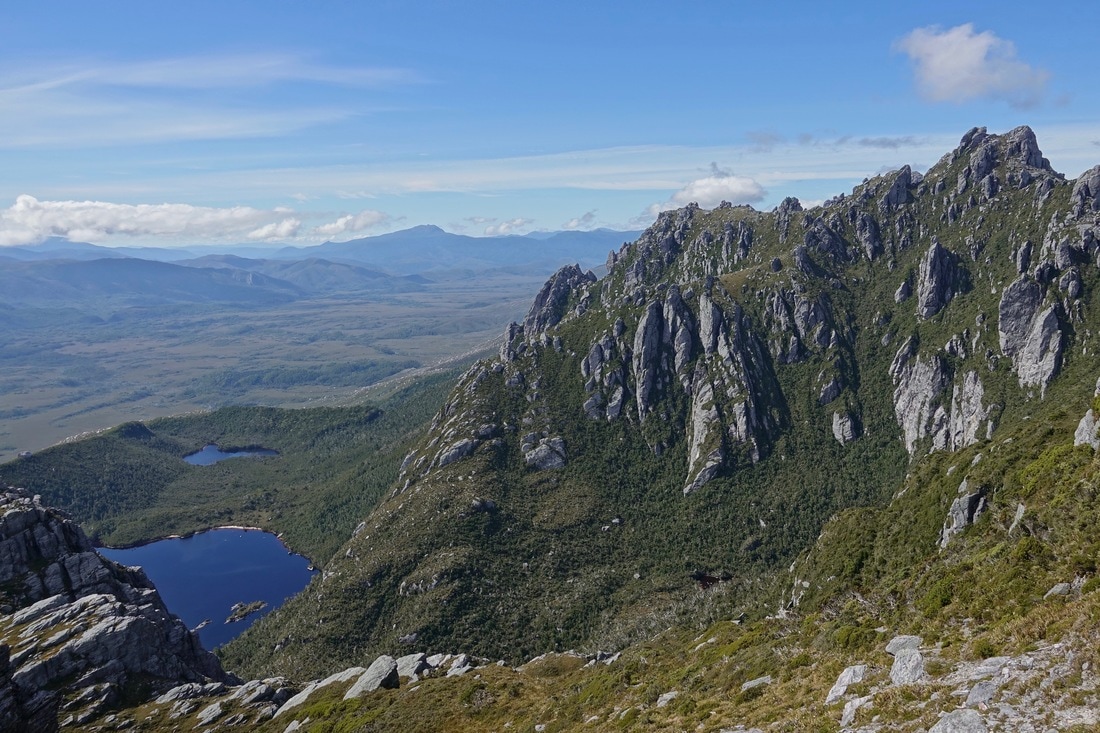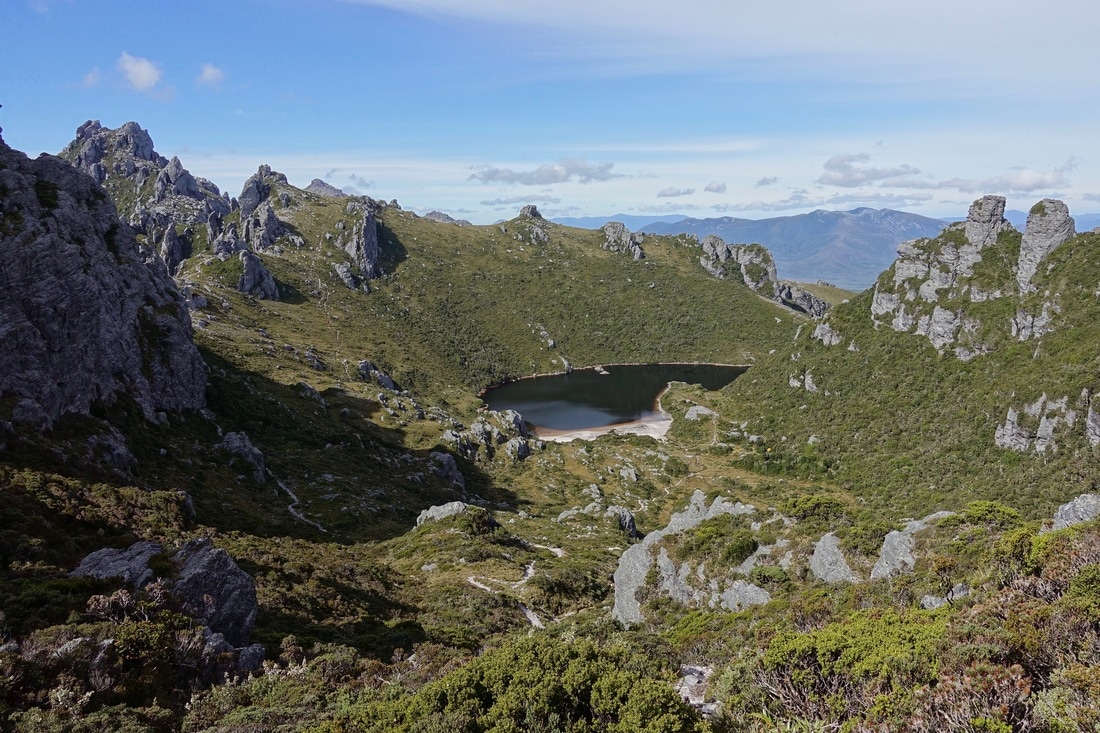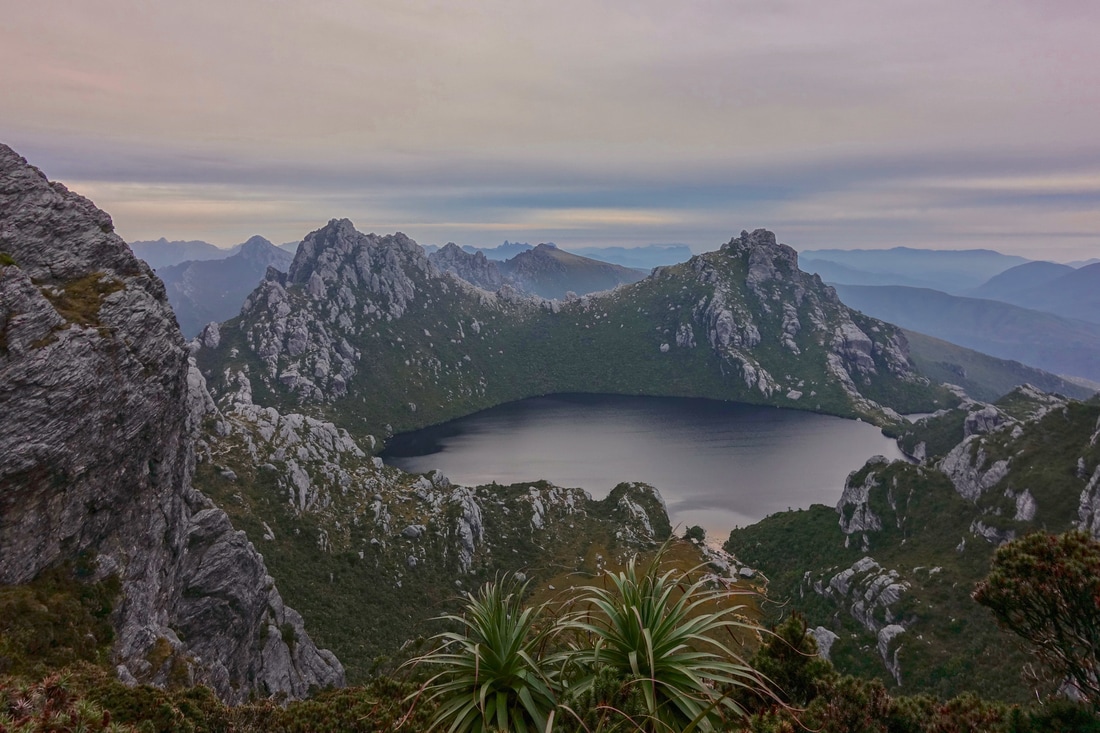Tasmania
West Coast
In February/March 2020 I walked down the west coast of Tasmania from Strahan to Melaleuca. A good balance of difficult, dangerous, and beautiful. Chapman sold me on the trek in his guidebook by saying that only one person completes it every three years. As anticipated I did not see anyone until the Port Davey track near the end.
The tour companies in Strahan are not hiker friendly so the only option to get to the beginning of the walk is to hitch a ride with local fisherman. I had good luck at the boat dock near the Macquarie Heads campground and was across in less than thirty minutes.
I took a side trip to the Cape Sorrell lighthouse after being dropped off at the Hells Gates jetty
After visiting the lighthouse the coastal walking was fairly straightforward to reach Dunes beach
Calm evening near Dunes Creek
Beautiful sunset on the first night
The unique feature about the northern section of the coast are the gulches. They vary from a fun climbing experience at low tide to quite challenging at high tide. This experience of watching and timing the waves to make progress was new to me as "trails" bypass these sections of the coast
Typical terrain along the northern coastline
The wind picked up after the second night and made campsite selection more difficult. Even with a strong tent, a partially sheltered site like the one above was not possible for the next five days with the Garmin device giving reports of 40-50mph wind gusts.
Despite the constant wind the majority of rainfall occurred during the overnight hours with periodic showers during the day. The clouds then seemed to get stuck on the mountain ranges to the east
The rivers went from chest deep at the beginning to requiring short swims with the nightly rainfall
The high winds also allowed some wildlife encounters as the animals could not hear me approaching. Tassie devils, wombats, and wallabies to name a few. Tiger snakes mostly moved away before I could spot them. The exception being one I pinched between the rocks on the beach during a storm. The snake got into attack position, raising the scales on its neck. Quite lucky- I either had enough separation or the pouring rain made it decide not to strike..
Animal tracks giving the path of least resistance
Speaking of animal tracks- crawling was an effective method at times, preventing some extra cuts and bruises
There was a sheltered camp on the north bank of the Hibbs River to get out of the rain. Make note of the suggested campsites in Chapman's guide for the north, camps in the south are easy to find
Clear weather in the morning which allowed the helicopter to arrive with food. The pilot also gave me a lift over the Christmas Cove area (see Cam's notes- he averaged 3 miles/day here compared to his normal pace of 35 miles/day on the Continental Divide Trail)
The area around Low Rocky Point was recently burnt and I gained a few days progress here compared to my planned schedule
Sunset at Nye Bay
Sheltered camp in the dunes, a low elevation area near brush was effective in blocking the wind
Mulcahy Bay
Looking east from Mulcahy Bay where I took a rest day with the Garmin device predicting over an inch of rain (likely accurate)
I went high from Wreck Bay traversing the ridge line of the De Witt Range south to take advantage of the first day in a week without any wind. There is an alpine lake to resupply on water. One of my favorite days of the trip
I decided to camp high finishing in the early afternoon
Looking south from the De Witt Range towards James Kelly Basin
I crossed the Davey belly down, paddling with my arms on a blow-up raft I had carried specifically for this purpose. Important to have a low or rising tide here. My dad sent the current tide times through the satellite messenger.
I enjoyed the final day of good weather reaching the Port Davey Track in the evening
Rowboats for the Bathurst Narrows crossing on the Port Davey Track
The following day I reached the empty huts in Melaleuca
The rangers gave me a hot meal to celebrate while waiting for the plane
Western Arthur Range
I started in the late evening after a three hour drive from the Hobart airport from Scotts Peak Dam (March 2017)
Climbing Moraine A with the Port Davey Track seen below
The view from the top of Moraine A
Lake Pedder in the distance
Lake Neptune and Triton
There were not many people in the Arthur Range, I met a Tassie man hiking alone and a couple from France. They both camped at Lake Cygus and were doing a daywalk to Lake Oberon.
I climbed Mount Pegasus to watch sunset and the weather turned quickly. I had already set up camp on a small beach on the far side of Lake Oberon (near the brown grass)
